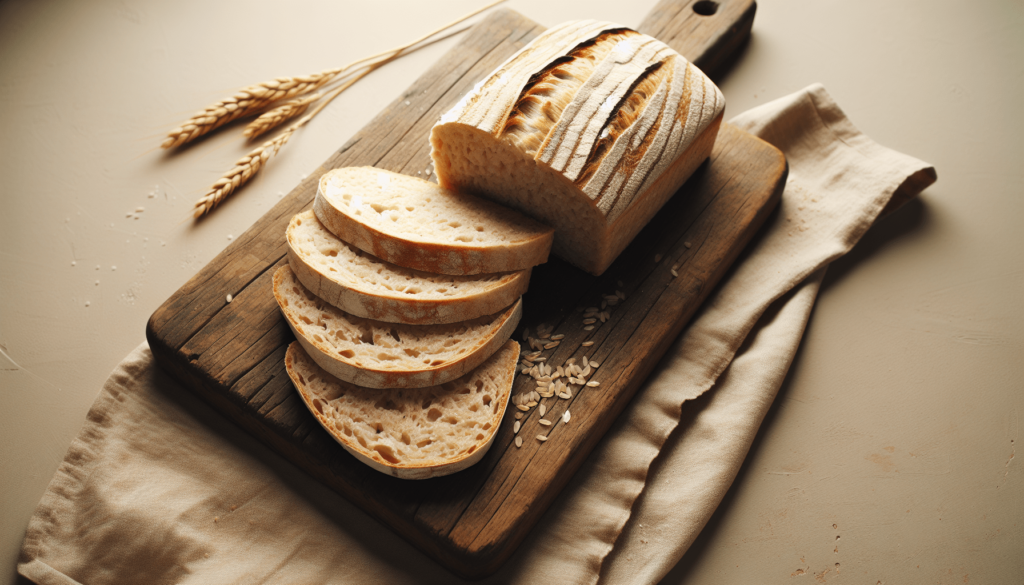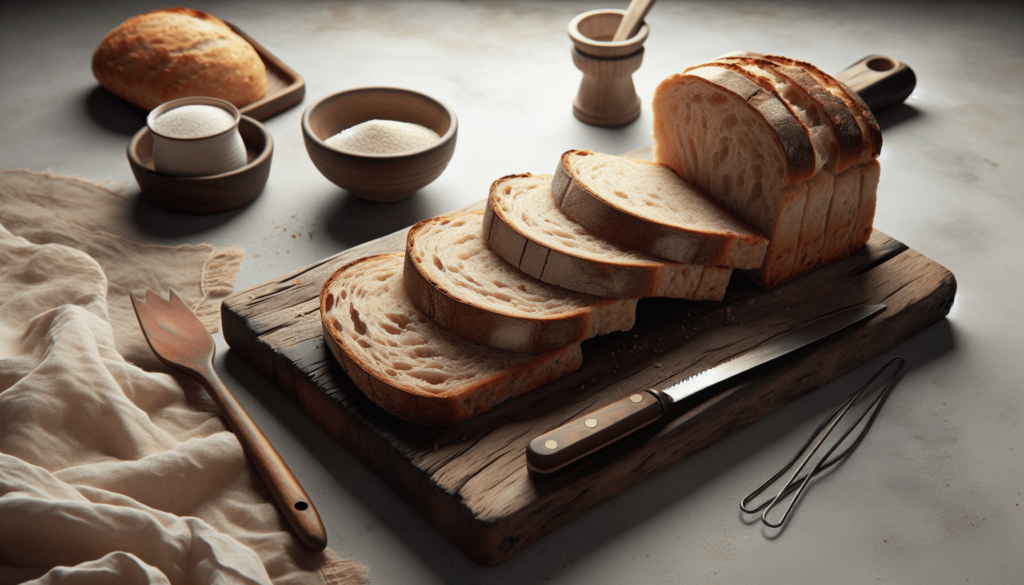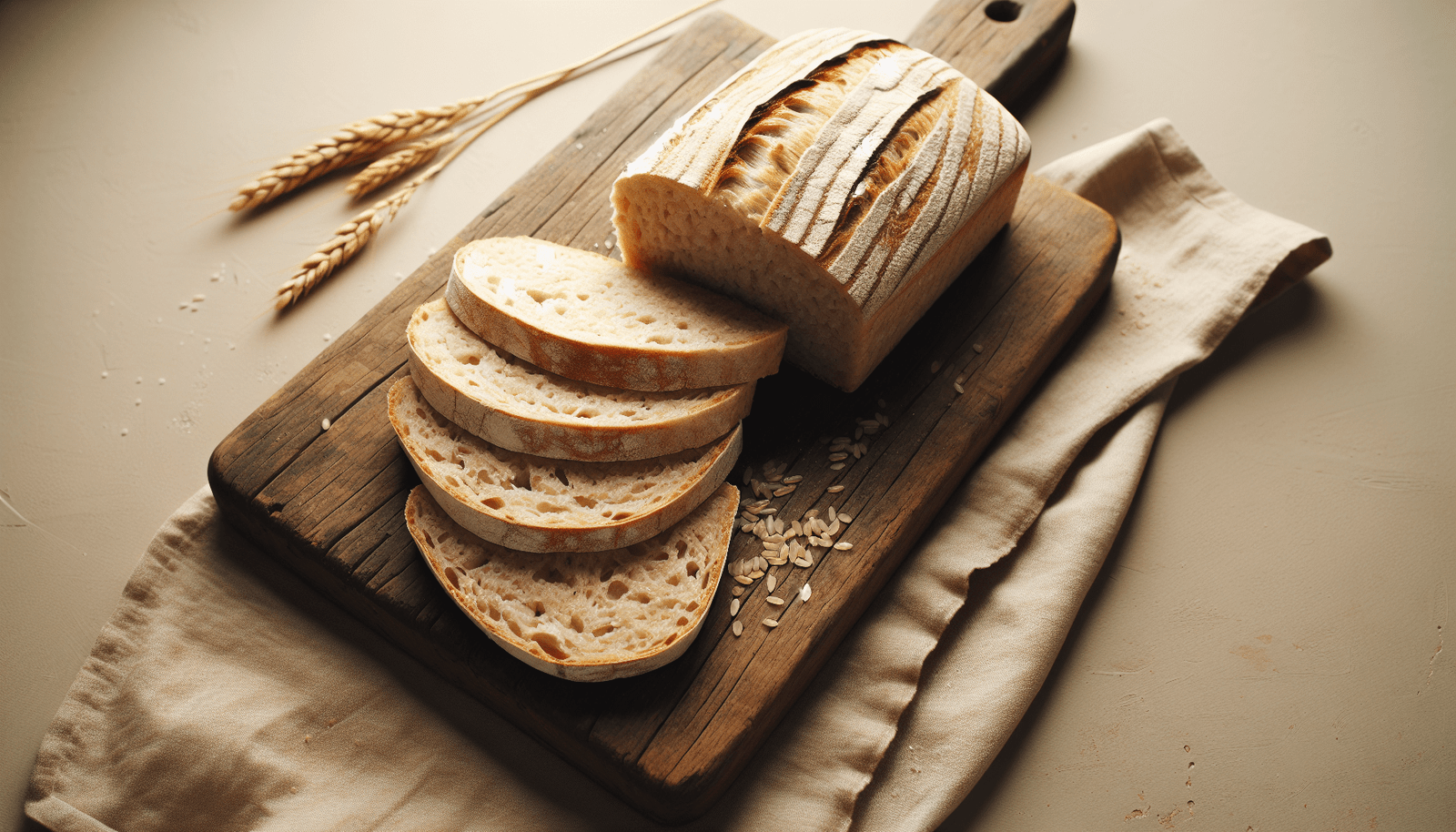Imagine a warm, comforting loaf of bread that is not only delicious but also gluten-free. In this article, you will discover a simple yet flavorful rice bread recipe that will leave you craving for more. With just a handful of ingredients, you can easily create this moist and fluffy bread, perfect for breakfast or as a side for any meal. Say goodbye to bland store-bought options and embrace the homemade goodness of rice bread. Let’s get started!

Ingredients
Rice flour
Rice flour is the main ingredient in rice bread. It is made from finely ground rice grains and is available in both white and brown varieties. White rice flour gives a lighter texture to the bread, while brown rice flour adds a nuttier flavor and a denser texture.
Yeast
Yeast is responsible for the bread’s rise and fluffy texture. Active dry yeast is commonly used in bread baking. It is important to check the yeast’s expiration date to ensure it is still active and can effectively leaven the bread.
Sugar
Sugar provides food for the yeast to activate and helps in the fermentation process. It also adds a touch of sweetness to the bread. You can use regular granulated sugar or other sweeteners like honey or maple syrup as a substitute.
Salt
Salt enhances the flavor of the bread and also helps to control the yeast’s activity during fermentation. It is an essential ingredient that shouldn’t be skipped.
Water
Water is needed to hydrate the rice flour and dissolve the yeast and sugar. It is important to use warm, not hot water for activating the yeast. This ensures that the yeast is activated properly without being killed by high temperatures.
Optional additions (such as dried fruits, nuts, or herbs)
To add extra flavor and texture to your rice bread, you can incorporate various optional ingredients. Dried fruits like raisins or cranberries, nuts like walnuts or almonds, or herbs like rosemary or thyme can be mixed into the dough. These additions make the bread more interesting and delightful.
Preparation
Activate the yeast
In a small bowl, combine the yeast, sugar, and warm water. Stir gently until the yeast and sugar are dissolved. Let it sit for about 5-10 minutes until the mixture becomes frothy. This indicates that the yeast is activated and ready to be added to the dough.
Mix dry ingredients
In a large mixing bowl, whisk together the rice flour, sugar, and salt. Make sure to evenly distribute the sugar and salt throughout the flour. This step helps to ensure that these ingredients are well-incorporated into the bread.
Gradually add water
Slowly pour the yeast mixture into the dry ingredients while stirring continuously. Gradually add water until the mixture forms a sticky dough. The amount of water needed may vary depending on the type and brand of rice flour used.
Knead the dough
Transfer the dough onto a lightly floured surface. Knead the dough for about 5-10 minutes until it becomes smooth and elastic. This process helps to develop the gluten in the rice flour and create a better texture in the final bread.
Let the dough rise
Place the kneaded dough into a greased bowl and cover it with a damp cloth or plastic wrap. Let it rise in a warm spot for about 1-2 hours or until it doubles in size. The rising time may vary depending on the room temperature and the yeast activity.
Shape the dough
After the dough has risen, gently punch it down to release any air bubbles. Transfer the dough onto a floured surface and shape it into the desired form. You can make a traditional loaf shape, rolls, or even experiment with different shapes and sizes.
Second rise (optional)
If you want a lighter and fluffier bread, you can let the shaped dough rise for a second time. Place it on a greased baking sheet or in a greased bread pan, cover it, and let it rise for an additional 30-60 minutes. This step is optional but can result in a more voluminous final product.
Bake the bread
Preheat the oven to the desired temperature (usually around 375°F to 400°F). Bake the rice bread for approximately 25-30 minutes or until it turns golden brown and sounds hollow when tapped on the bottom. The baking time may vary depending on the size and shape of the bread.
Cool and serve
Once the bread is baked, remove it from the oven and let it cool on a wire rack for at least 15-20 minutes before slicing or serving. This cooling time allows the bread to set and develop its final texture. Enjoy your freshly baked rice bread!
Tips and Variations
Use different types of rice flour
Experiment with different types of rice flour to discover new flavors and textures. You can try white rice flour, brown rice flour, or even specialty rice flours like black rice or purple rice flour. Each type of flour will give a distinct character to your bread.
Add spices or herbs for flavor
Enhance the flavor of your rice bread by adding spices or herbs. You can try cinnamon, nutmeg, cardamom, or even savory herbs like rosemary, thyme, or garlic powder. These additions will give your bread a unique and delicious taste.
Experiment with different texture by adjusting water
If you prefer a lighter texture, add a little more water to the dough. If you prefer a denser texture, reduce the amount of water. Adjusting the water content allows you to customize the texture of your rice bread according to your preference.
Add dried fruits or nuts for extra taste and texture
To make your rice bread more interesting and flavorful, consider adding dried fruits or nuts to the dough. Raisins, cranberries, chopped almonds, or chopped walnuts can bring a delightful burst of taste and texture to your bread.
Make it gluten-free by using gluten-free rice flour
Rice bread is already naturally gluten-free, but if you have celiac disease or gluten sensitivity, make sure to use a certified gluten-free rice flour. This ensures that your bread remains safe and suitable for a gluten-free diet.
Try making a savory version with cheese and herbs
If you’re craving a savory bread, you can transform the rice bread by adding cheese and herbs to the dough. Cheddar cheese, Parmesan cheese, or feta cheese combined with herbs like basil, oregano, or thyme can create a delicious savory rice bread.
General Tips for Success
Measure accurately
When baking bread, precise measurements are crucial. Use measuring cups and spoons to accurately measure the ingredients. Even slight variations can affect the final outcome of the bread.
Check the yeast’s expiration date
Before using yeast, always check the expiration date on the packaging. Expired yeast may not activate properly and can result in a flat and dense bread.
Use warm, not hot water for activating yeast
The water used to activate the yeast should be warm, between 100°F to 110°F. Hot water can kill the yeast, while cold water may not activate it properly.
Allow enough time for the dough to rise
Proper rising time is essential for the bread’s texture and flavor. Be patient and allow the dough to rise until it doubles in size. Rushing this step can result in a dense and underdeveloped bread.
Avoid overworking the dough
While kneading, be gentle with the dough and avoid overworking it. Overworking can lead to the development of too much gluten, resulting in a tough and chewy bread.
Ensure the bread is fully baked before removing from the oven
To ensure the bread is fully baked, tap the bottom of the loaf. If it sounds hollow, it is a sign that the bread is done. If it sounds dense or doughy, bake it for a few more minutes until fully cooked.

FAQs
Can I use brown rice flour instead of white rice flour?
Yes, you can use brown rice flour as a substitution for white rice flour in the recipe. Keep in mind that brown rice flour will result in a slightly denser and nuttier-tasting bread.
How long does it take for the dough to rise?
The rising time can vary depending on several factors, including the room temperature and yeast activity. On average, the dough can take anywhere from 1-2 hours to double in size during the first rise.
Can I freeze rice bread?
Yes, rice bread can be frozen for later use. After the bread has cooled completely, wrap it tightly in plastic wrap or aluminum foil, then place it in an airtight container or freezer bag. It can be stored in the freezer for up to 2-3 months.
Can I make rice bread without yeast?
While yeast is a key ingredient in traditional bread baking, alternative methods like using baking powder or baking soda can be used to make yeast-free rice bread. These methods will result in a different texture and flavor.
How do I store rice bread to keep it fresh?
To keep rice bread fresh, store it in a cool and dry place, preferably in an airtight container or bag. Wrapping the bread in a clean kitchen towel can also help maintain its freshness. Rice bread is best consumed within a few days of baking.
Health Benefits of Rice Bread
Gluten-free alternative for individuals with celiac disease or gluten sensitivity
Rice bread is an excellent gluten-free alternative for individuals following a gluten-free diet due to celiac disease or gluten sensitivity. It allows them to still enjoy the pleasure of bread without experiencing discomfort or adverse symptoms.
Provides essential nutrients like vitamins, minerals, and fiber
Rice flour used in rice bread contains essential nutrients such as B vitamins, iron, magnesium, and fiber. These nutrients contribute to overall health and wellbeing.
May help regulate blood sugar levels
Rice bread has a lower glycemic index compared to bread made from wheat flour. This means it can help regulate blood sugar levels, making it a suitable option for individuals with diabetes or those aiming to control their blood sugar levels.
Suitable for a low-sodium diet
Rice bread can be easily adapted for a low-sodium diet by reducing or omitting salt in the recipe. This makes it an ideal choice for individuals with high blood pressure or those watching their sodium intake.
May aid in weight management
Rice bread is generally lower in calories compared to bread made from wheat flour. It can be a helpful option for individuals who are trying to manage their weight or reduce their calorie intake.
Can be part of a balanced diet for individuals with wheat allergies
Individuals with wheat allergies or sensitivities can include rice bread as part of a well-balanced diet. It provides a gluten-free alternative to conventional wheat-based bread and allows for dietary variety and enjoyment.
Conclusion
Rice bread offers a versatile and gluten-free option for bread lovers. With its customizable flavors and textures, it can satisfy a wide range of preferences. Additionally, rice bread provides health benefits such as being a gluten-free alternative, essential nutrients, and potential blood sugar regulation.
Experiment with different variations, ingredients, and shaping techniques to find your favorite flavor and texture. Whether you prefer a sweet, nutty bread or a savory, cheesy one, rice bread can be customized to suit your taste buds perfectly.
Embrace the joy of baking and savor the delicious taste of homemade rice bread while enjoying the numerous health benefits it has to offer.


